How to Easily Sync Your Phone With Windows 10?
Now and then, a user may need to sync their Android phone with a Windows PC. With advancements in technology, the options are nearly unlimited, but will differ from case to case. Some users may want to sync only specific files or photos, while others may want to sync notifications or messages.
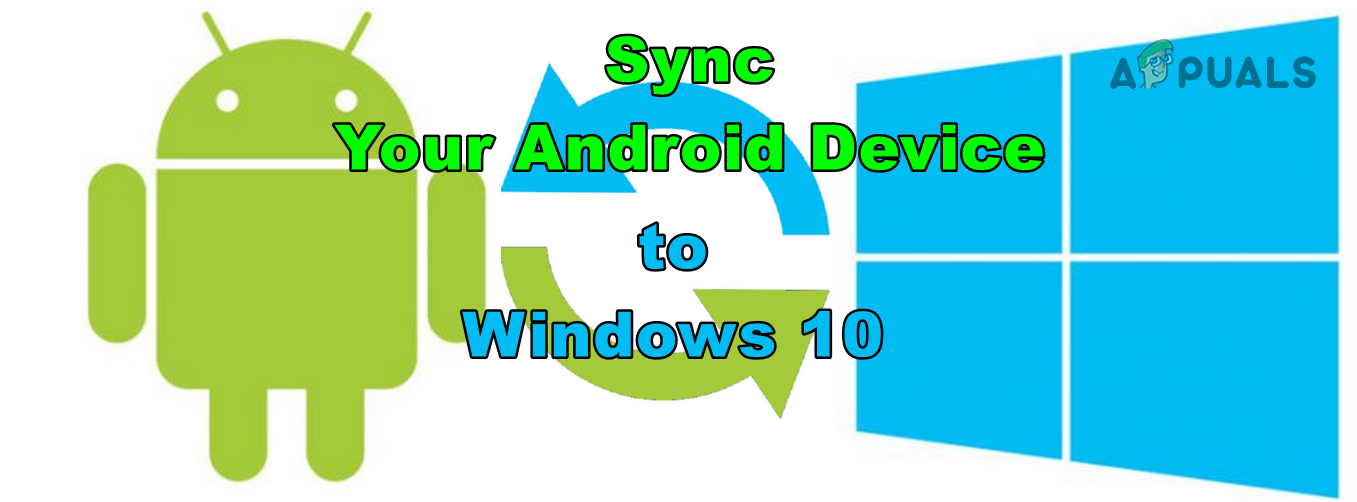
For some, a shared clipboard is essential, and they may even want to receive calls on their phone through their systems. Therefore, a case-by-case scenario will determine the best option for a user to follow. Every OEM (Google, Microsoft, etc.) is putting effort into natively supporting cross-device compatibility in their OS.
So, the options can be categorized as follows:
- Using an OTG adapter or OTG dual USB drive.
- Using a USB connection.
- Using the Bluetooth Protocol
- Using Wi-Fi Sync.
- Using the Android ADB.
- Using the Mobile Data/Internet
- Using apps.
- Using cloud services.
- Settings up a Local FTP Server on the PC or Phone
Use an OTG adapter or a USB with OTG.
For a common user who simply needs to sync some files between their PC and Android phone, the best option would be to use an OTG adapter with a USB storage device or a Dual Drive Storage USB that supports OTG.
- Firstly, connect the OTG cable/adapter to the USB, and then plug the OTG side into the USB port of the Android phone. If a USB OTG device is available, plug the USB directly into the Android phone.
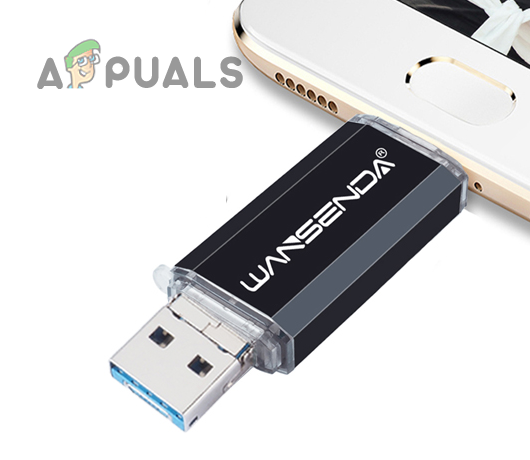
Plug the OTG USB into the Android Phone - Once the phone detects the newly connected USB, open the USB storage device in the phone’s File Explorer, and copy the files to the USB.
- Afterward, unmount the USB from the phone and connect it to the Windows PC.

Unmount the USB Storage from the Android Phone - Then transfer the data to the PC and vice versa.
Use a USB connection.
Although using an OTG is a good short-term solution, having personal or corporate data on a USB device is generally not a good idea, as losing the USB can put the data in jeopardy. In this case, using a compatible USB cable to connect the Android phone to a Windows PC would be a better option.
- Firstly, find a compatible USB cable that transfers the data from the phone, not just charges it. If USB 3.0 is supported on the Android phone and Windows PC, then using a USB 3.0 cable is preferred.
- Now, connect the USB cable to the Android phone, and then connect it to the Windows PC.

Connect the Windows PC and Android Phone Through a USB Cable - Afterward, slide up (or down) on the screen to open the Quick Settings menu, and tap on the USB connection mode.
- Now select Transfer File Mode or MTP mode and transfer the data between the system/Android.
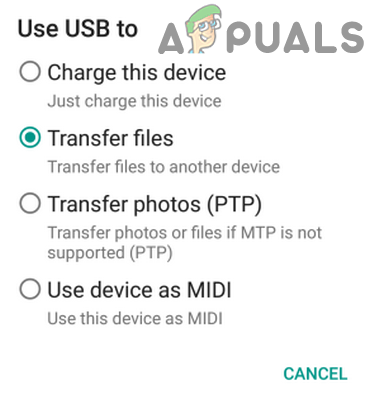
Use the Transfer Files Mode of USB
Keep in mind that some users may need to install their Android phone’s drivers from the OEM or Google website. In the case of an ancient Android device from a non-famous brand, users might have to power off the device to grant the system read/write access to the device’s memory.
Use the Bluetooth protocol.
If the system supports a Bluetooth protocol or a Bluetooth USB dongle is inserted into the system, then using a Bluetooth connection is a better option than a USB connection cable, as finding a cable every time a file transfer is required can be cumbersome at times.
- Swipe up (or down) on the phone’s screen to open Quick Settings, then tap or hold the Bluetooth icon.
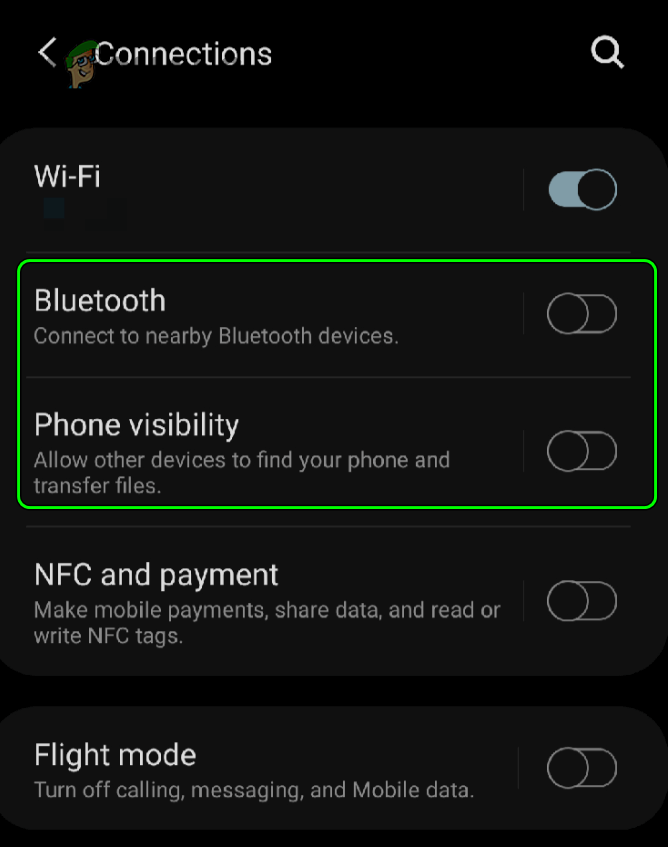
Enable Bluetooth of Phone and Make it Discoverable - Now enable Bluetooth and make sure the device is discoverable.
- Then, open the Action Center in the system tray and click on Bluetooth. If the Bluetooth icon is not shown, you may display Bluetooth in the Action Center.
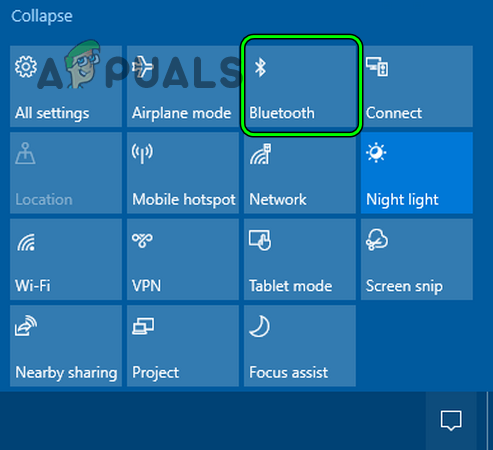
Enable Bluetooth in the Action Center of Windows 10 - Now add the Bluetooth device to the system by following the instructions on the screen.
- Then, you can share the files and folders between the system and the Android phone using Bluetooth.
At the time of this writing, Google plans to extend Android’s Nearby Share to Windows as well, so keep an eye on it.
Use the Android ADB.
The Android ADB is a command-line tool used to manage and execute code on an Android device. For larger files (like 30 GB of data), the MTP protocol of a USB connection or Bluetooth may take a longer time with interruptions, causing the user to reinitiate the sync process repeatedly. In such a case, using Android ADB (suitable for computer geeks) to copy these files is a good option.
- Install Android ADB on your Windows system and connect the system to the Android phone using a USB cable.
- First, enable USB Debugging in the Developer Options of the phone. Afterward, you may use ADB Wireless if the system and Android device are connected to the same network.
- Now, you can use various commands in the system’s administrative Command Prompt to copy files, as shown below:
adb push C:\file /sdcard/file To copy a file from the system’s C drive to the Android Device’s SD card.
adb pull /sdcard/file C:\file It is a reversal of the push command which fetches the file from the SD card of the Android device and places it in the system’s C drive.

ADB Push and Pull Commands
Keep in mind that whenever the Android device restarts, a user may have to physically reconnect the device to the system with a USB cable to re-initiate the ADB Wireless.
Use the Wi-Fi sync.
In this modern era, using a USB connection or Bluetooth may seem old-fashioned and time-consuming for many users. Instead, utilizing Wi-Fi or wireless sync is a good choice.
Share the folder on the PC.
- Firstly, enable sharing on the Windows PC and activate SMB protocols (at your own risk, as these protocols make your system, network, and data vulnerable).
- Now, create a folder on the system’s desktop (or wherever you are comfortable with).
- Then, right-click on the newly created folder and select Properties.

Open Properties of the Folder - Now head to the Sharing tab and click on the Share button.

Click on the Share Button in the Sharing Tab - Then, search for “Everyone” and click on “Add.
- Now, select “Everyone” and set the permission level to “Read/Write.
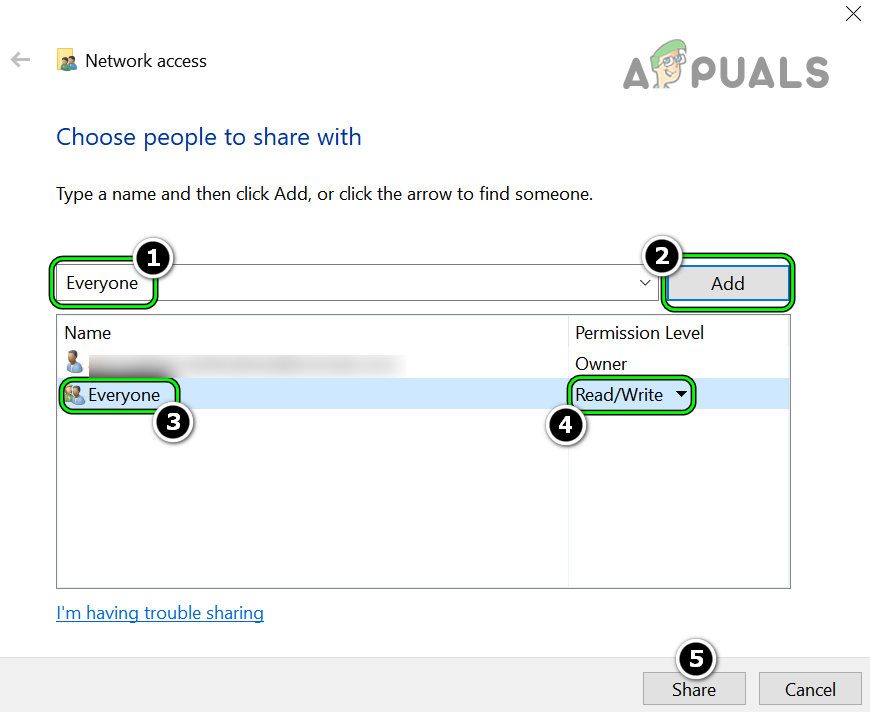
Share the Folder While Giving Everyone Read/Write Access to it - Then click on the Share button and open Advanced Sharing.
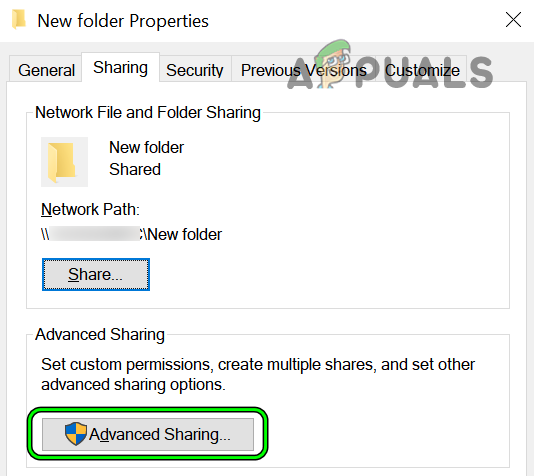
Click on Advanced Sharing in the Sharing Tab - Now, put a checkmark on “Share This Folder” and click on “Permissions.

Share the Folder and open Permissions - Then, select “Everyone” and checkmark “Full Control.
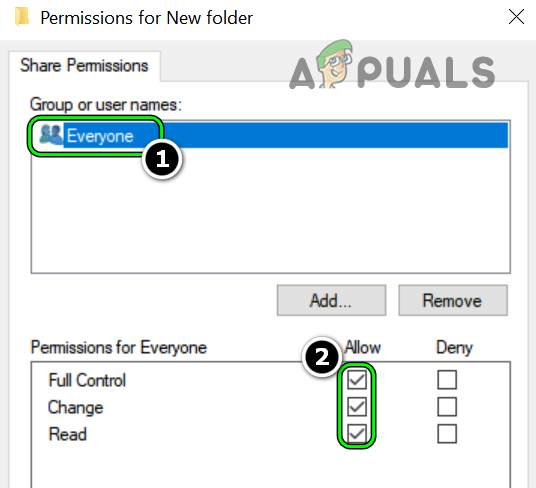
Give Everyone Full Control in the Folder Permissions - Now, click on OK and head to the Security tab.
- Then, click on “Edit” and select “Add.
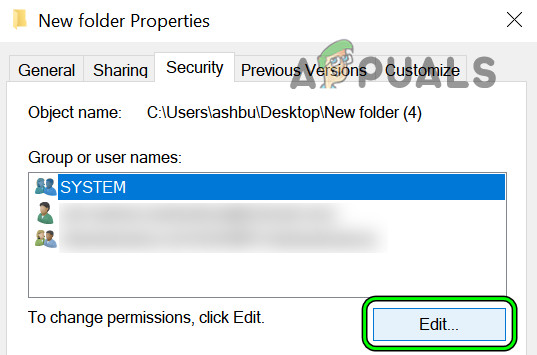
Click Edit in the Security Tab of the Folder Properties - Now type ‘Everyone‘ and click on ‘OK.’

Add Everyone into the Security Group of the Folder - Then select ‘Everyone‘ and place a checkmark next to ‘Full Control.’
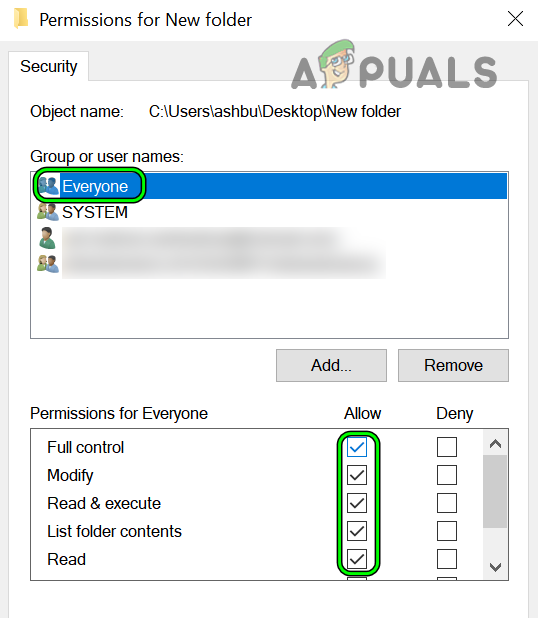
Give Everyone Full Permission in the Security Tab of the Folder - Now close the Properties window on the system.
Install a File Explorer application on the Android phone and use it to access the Windows share.
- Open the Google Play Store and search for a file explorer, such as CX File Explorer.
- Now, install it and afterward, launch it.

Install and Launch CX File Explorer - Then, head to the Network tab and tap on New Location.
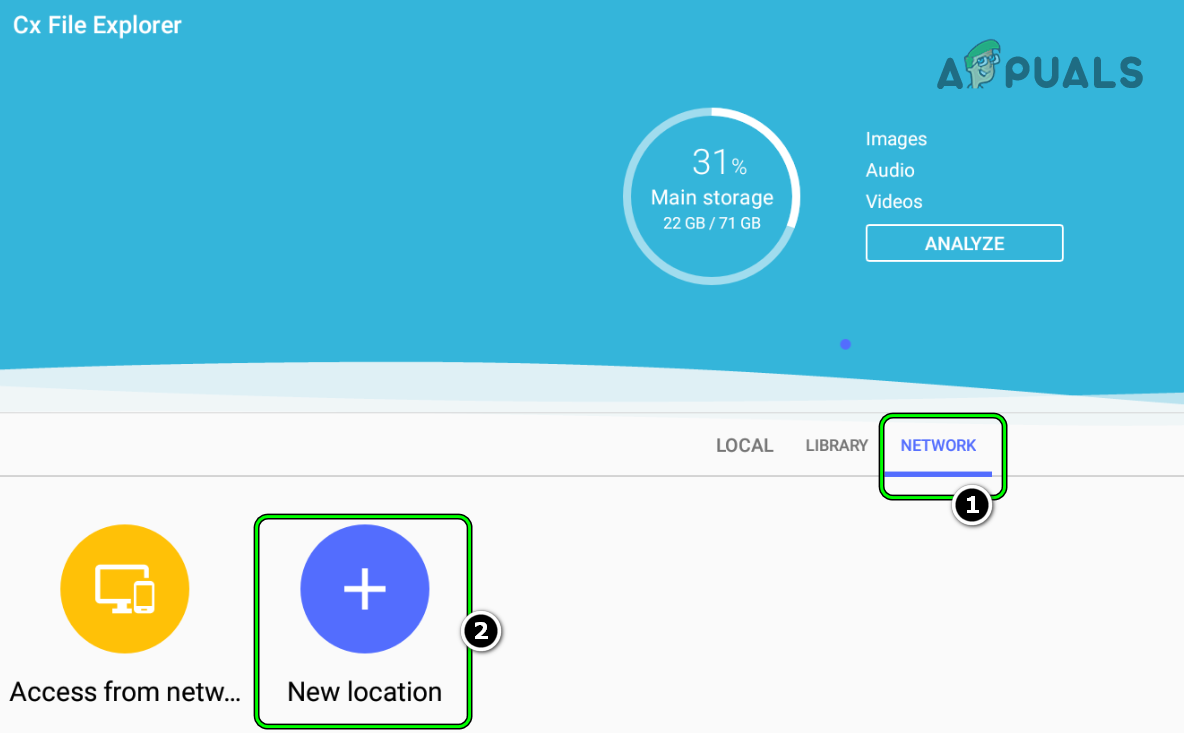
Add a New Location in CX File Explorer - Now switch to the Remote tab and select Local Network.

Open Local Network in the Remote Tab of CX File Explorer - Then, it will search for your system, and once displayed, tap on it.
- Now, enter the username and password (of the system). For example, if a user is using a Microsoft ID to log into the Windows PC, they should enter the complete Microsoft ID (such as xyz@hotmail.com) and enter the password for the Microsoft ID.

Enter Microsoft ID and Password in the CX File Explorer - Then, tap on ‘OK,’ and once the PC’s shared folder appears, you may use this shared folder to transfer data between the PC and the Android phone.
Keep in mind that whenever the PC or router restarts, you may have to re-add the share in the File Explorer app as the PC’s IP is switched. In this case, a user may set a static IP for their PC or add the shared host one by one every time the PC starts. Eventually, all the IPs used by the computer will be added to the File Explorer app. For example, if your Wi-Fi is used by five devices, each time you add the share of a new host, a time will come when all five IPs of the PC will be added to the File Explorer app. Afterward, you may simply tap on each one to check on which IP the share is available.
Use the phone or system’s hotspot.
If there is no Wi-Fi network available, a user may use the phone or system’s hotspot to access the Windows shared folder (as discussed above).
- You may create a hotspot on the Windows PC or enable a hotspot on the Android phone.
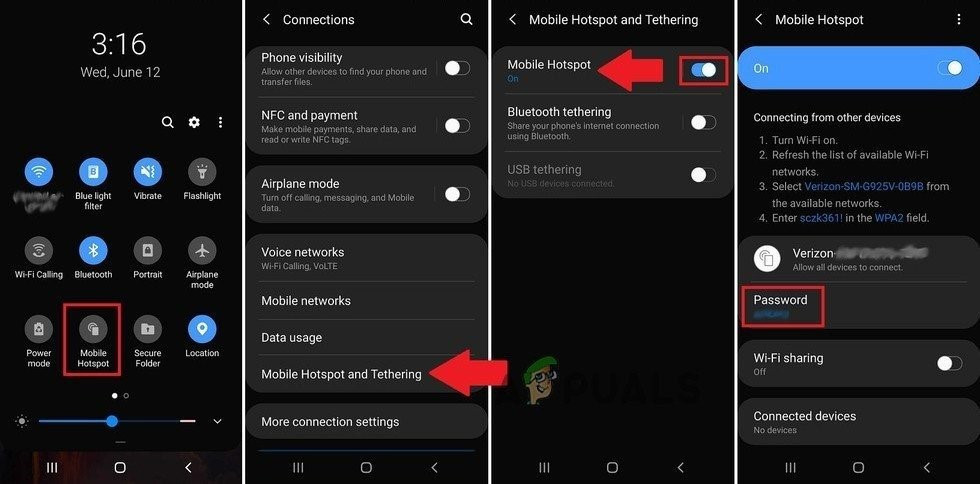
Enable Hotspot of Your Phone - Now, connect the other device to the hotspot, and then you can access the PC share.
If the PC only supports LAN connections, you may use an app (as discussed later) to sync the Android device to a Windows 10 PC.
Use apps.
Until now, our effort has been to use the OS native approach to sync the data between Android and Windows. However, for many users, this may be too technical, time-consuming, or not ideal. For these users, there are plenty of applications available to sync data between Android and Windows, particularly for those interested in automatically syncing a folder’s contents. These applications can be categorized as follows:
- Microsoft Applications
- OEM applications.
- Cloud services.
- Third-party applications.
Microsoft Apps
To enhance cross-device compatibility with Windows, Microsoft has released numerous applications. These applications can synchronize various types of data between Windows and Android devices.
Your Phone App
The first and most famous app for syncing an Android device to a Windows 10 PC is Microsoft’s Your Phone App. It supports syncing notifications (from apps), messages, calls, pictures, continuing on PC, app mirroring (on selected Samsung phones), etc. from an Android phone to a PC.
- Click on Windows, search for and open “Your Phone.
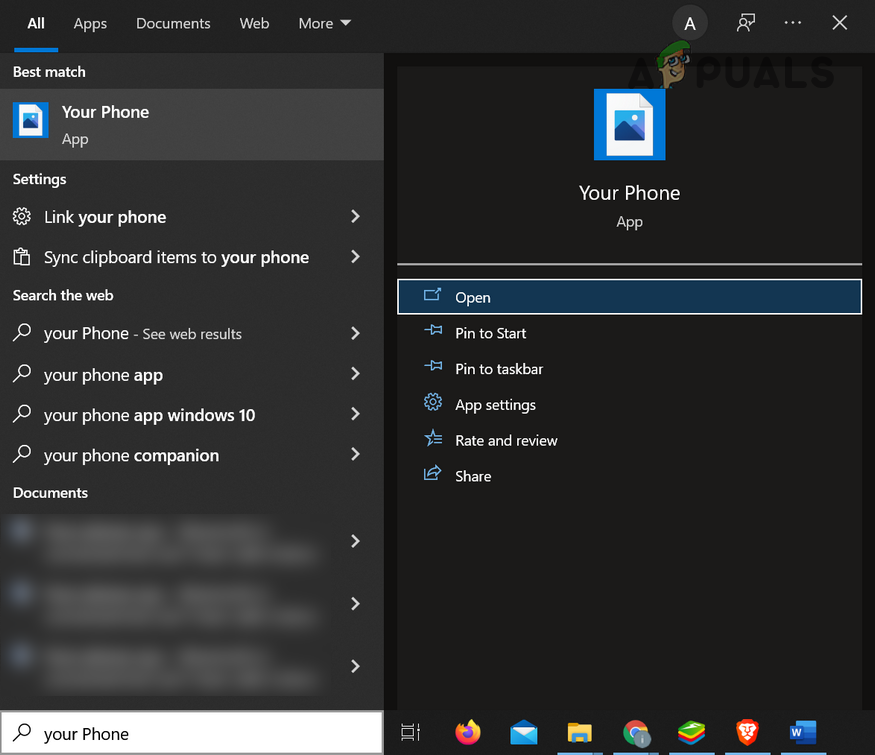
Open Your Phone App on the System - Now click on Get Started and sign in with a Microsoft account.
- Then, open the Google Play Store and install Your Phone Companion – Link to Windows.
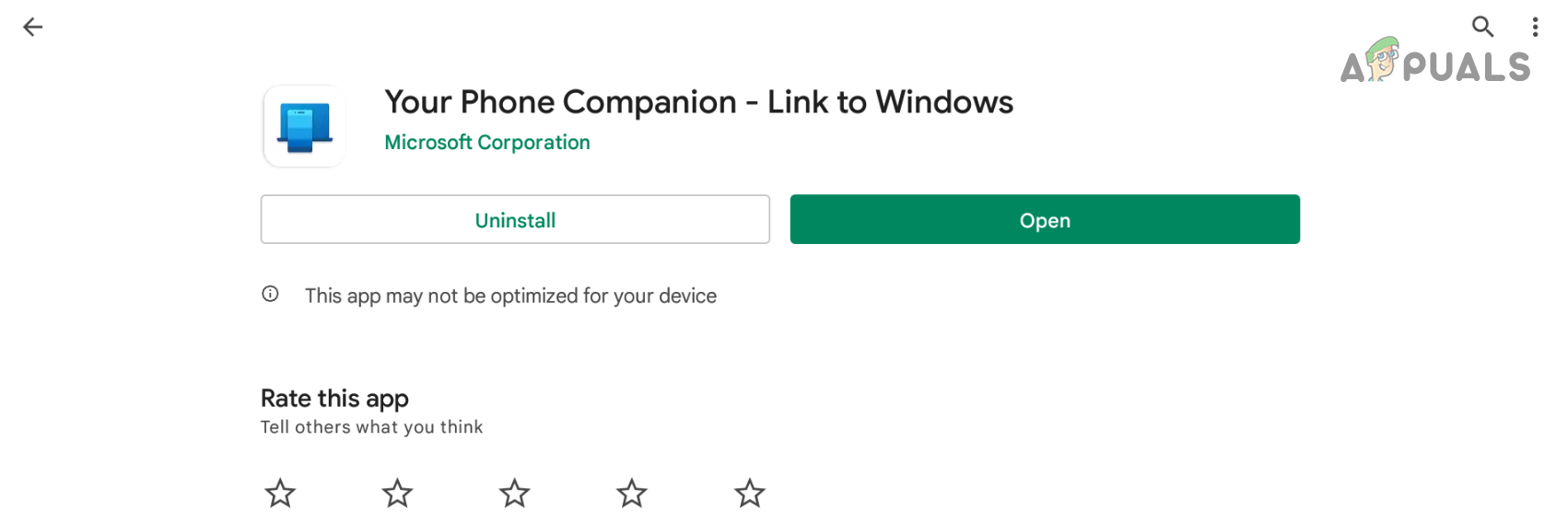
Install Your Phone Companion on the Phone and Launch it - Now, open Your Phone Companion and sign in with the same Microsoft account that was used in Step 2.
- Then, follow the prompts on the screen to link the Windows PC to the Android device. If the phone and PC are on different networks, do not forget to enable Sync over mobile data in the Phone Companion app.
Then you can sync your Phone App to synchronize data between the Android device and PC. Keep in mind that your Phone App can support multiple Android devices at once.
Photos Companion
To wirelessly sync photos and videos between an Android phone and a Windows PC, Microsoft Photos Companion is the best candidate.
Cortana
If a user wants to sync reminders from his Android phone, then Cortana is a great option. A user may enable Cortana Cross-Device to sync notifications of missed calls, messages, etc.
OneNote
OneNote is a perfect choice to sync notes between an Android phone and a Windows system.
Outlook
A user may use Outlook to sync calendar events between Android and a Windows PC.
Microsoft Launcher
If a user wants to sync Windows Timeline with their Android phone, then the Microsoft Launcher is the answer to this requirement. If they are already using the Microsoft Office app (like Word) on an Android phone, then using Microsoft Launcher can make syncing seamless, as a user can launch a file from Android to their PC.
Office Lens.
If a user wants to sync their scans from an Android device, then using Office Lens can make it possible.
Edge
If a user wants to resume his browser session from an Android device, then using Edge makes it possible without any hassle. However, all other major browsers now offer the same functionality.
Microsoft Solitaire Collection
A user can play Microsoft Solitaire Collection in sync on Android and Windows.
There are plenty of other Microsoft apps, like Microsoft To-Do, that you can explore on the Play Store or on Microsoft’s website.
Use an OEM app.
Many OEMs have released applications that users may use to sync data between their Windows PCs and Android devices. These applications include Samsung SideSync, Huawei Share or Huawei HiSuite, Mi PC Suite, etc. You may find the OEM app more than sufficient for syncing data between the PC and Android.
Use the cloud services.
If automatic syncing of data is required, then using a cloud service is a good option. Since a Windows PC is involved, the first natural choice should be OneDrive. You can also search for other cloud storage applications.
Third-party apps.
There is no shortage of 3rd party apps that a user can use to sync data between an Android device and a Windows PC. These apps can be categorized as follows:
- Chat/Email Apps
- Remote Control Apps
- Mirroring apps
- File Explorers or File Managers with an FTP Server
- Sharing apps.
- Automatically Syncing Apps
- Android Emulators
- Local Servers on a Windows PC
Chat/Email Apps
You can send files between an Android phone and a PC through chat apps like WhatsApp (or WhatsApp Web), Skype, etc., or by sending an email to an address that can be accessed on the PC.
Remote Control Apps
Many remote-control apps, such as TeamViewer, give users the option to send files between devices.
Mirroring apps.
There are many mirroring apps (such as AirMirror or AirDroid) that a user can use to transfer files between devices. You may also explore other apps in the category like Push Bullet or Join.
File explorers or file managers with an FTP server.
Many popular file manager apps (CX File Explorer, Total Commander, MyPhoneExplorer, Solid Explorer, etc.) can be used to access files from the Windows share, but these apps also have built-in (or plugin) FTP servers. With this feature, an Android phone can be converted into an FTP server, which can then be accessed from a browser (or Windows File Explorer). For illustration, we will discuss the process using CX File Explorer.
- Install the CX File Explorer from the Google Play Store on your phone and launch it.
- Now, head to its Network tab and open Access from Network.
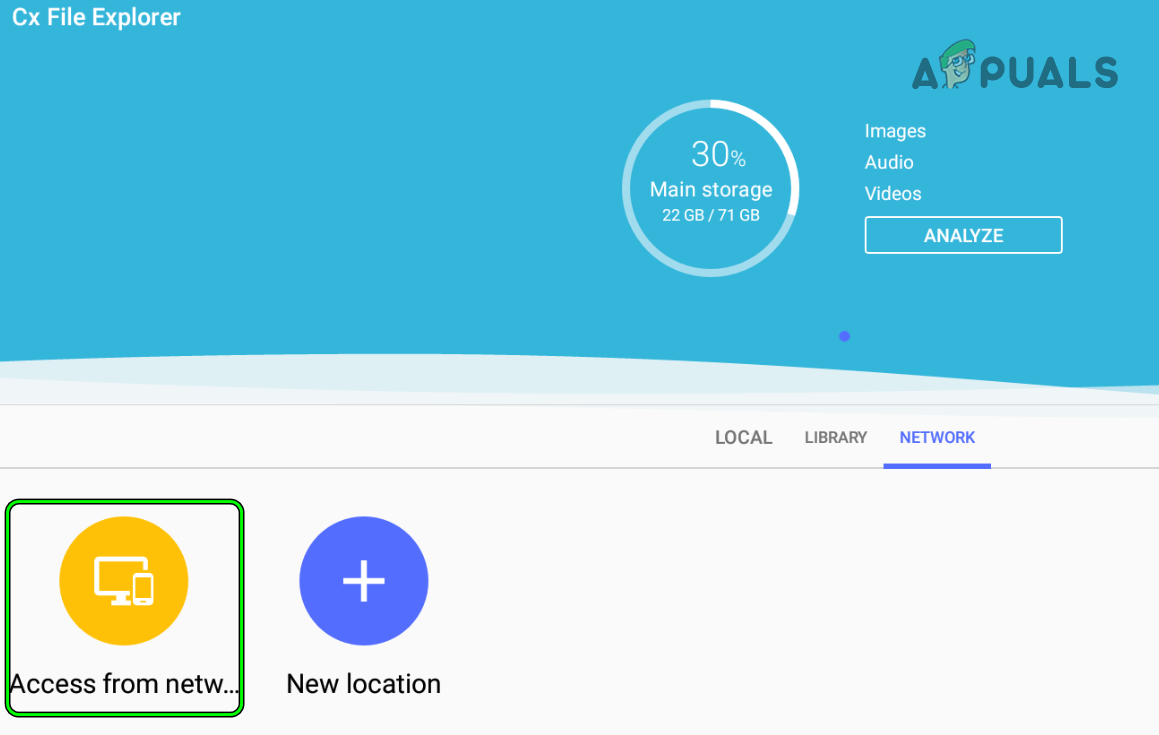
Open Access from Network in CX File Explorer - Then, tap on “Start Service” and open a browser on the PC.
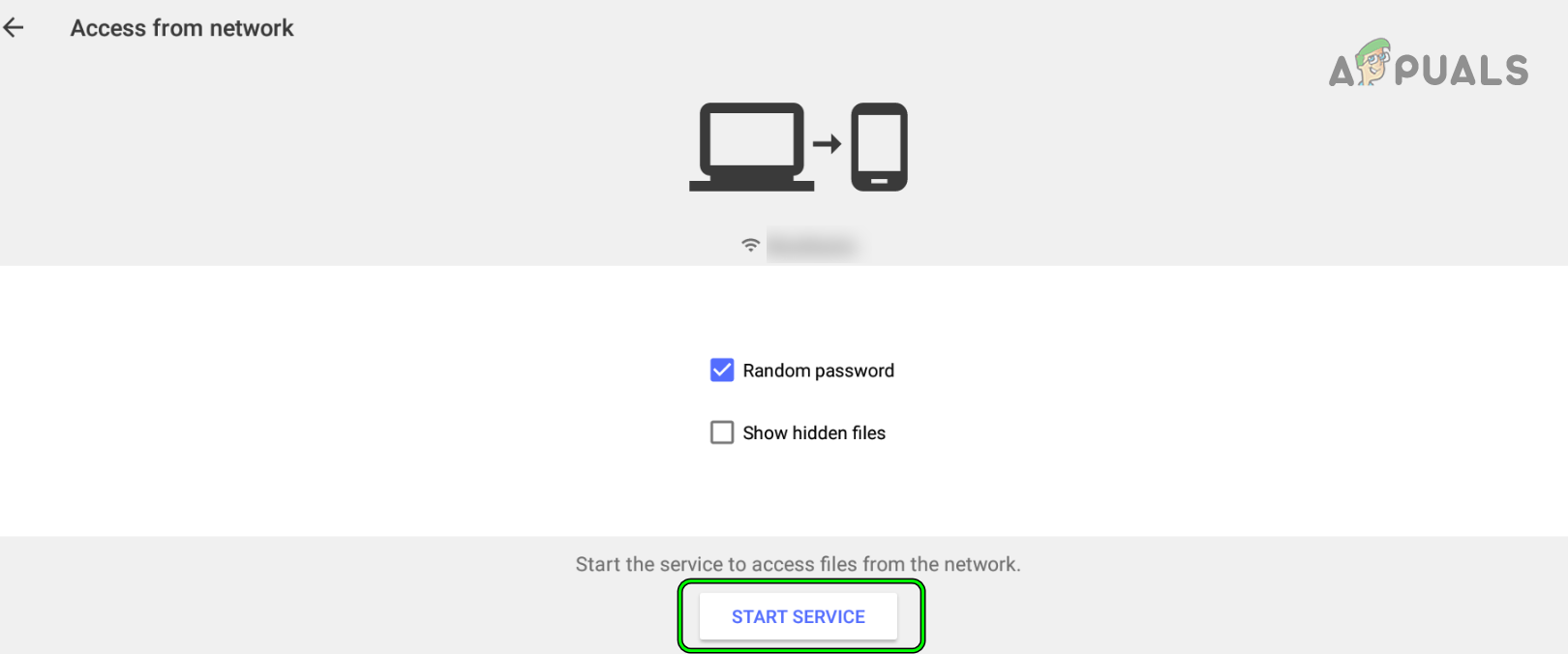
Start FTP Service in CX File Explorer
- Now, enter the address shown in the CX File Explorer, e.g., the following:
ftp://192.168.1.100:1358
- Then press the Enter key, and when prompted, enter the username and password provided in the CX File Explorer.
- Now you can use the FTP protocol to transfer files between the PC and Android phone.
Keep in mind that Windows File Explorer is the preferred option for accessing the FTP server. Simply copy the FTP address into the address bar of File Explorer and hit Enter. If prompted, enter your credentials, and you can easily manage Android files and folders from Windows File Explorer.
Sharing apps.
here are many popular sharing apps that a user can use to transfer data between a Windows machine and an Android phone. The following are a few well-known apps in this category:
- Share it.
- Zapya
- Snapdrop
- SendAnywhere
Automatically Syncing Apps.
If a user wants to automatically sync specific folders between an Android device and a Windows PC (using local Wi-Fi sync or the Internet), then using automatic syncing applications may solve the problem. Here is a list of some popular syncing applications:
- Resilio Sync.
- FreeFileSync
- IFFTTT (not a syncing app but can be configured to be a one)
- Syncthing (Our personal favorite)
Android Emulators
A user may use an Android emulator (such as Bluestacks) to transfer files from the Android device to the emulator (by using an app like Google Files) and then copy the files from the emulator to the PC, or vice versa.
Local servers on a Windows PC.
If none of the above meets your requirements, then setting up a local server on a Windows PC may fulfill them. Here are a few examples of applications that can do so:
- WebDAV
- WinSCP with KDE Connect
- Nextcloud
In the end, please do not forget to leave us a comment on how it worked for you. Also, please mention any methods that we may have overlooked.